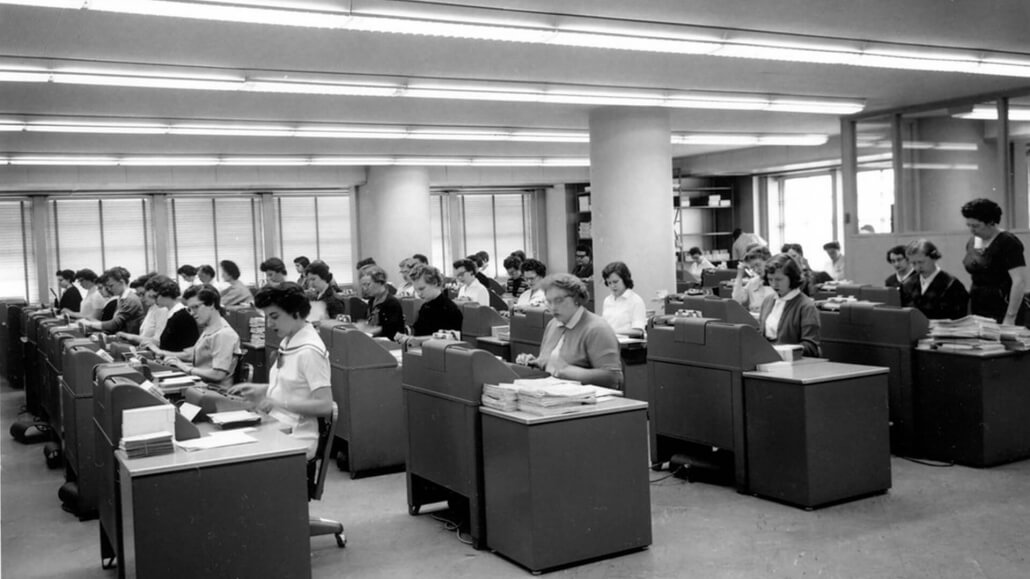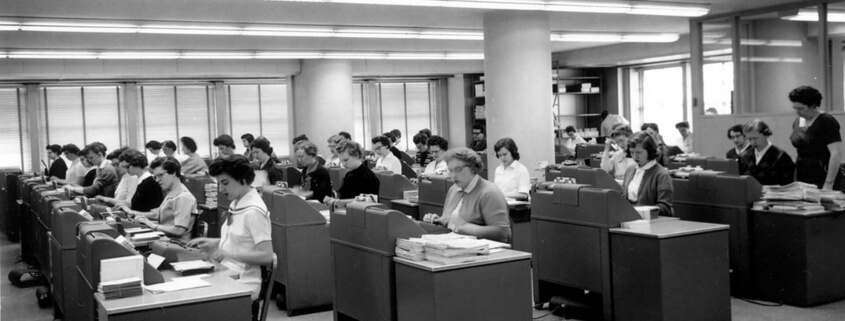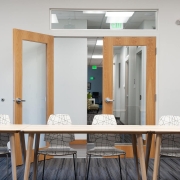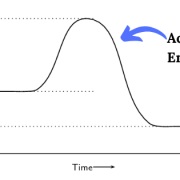The Coworking Value Proposition – Part 1
Between being a coworking space & building owner the past five years and being the co-founder of a software company focused upon supporting the operation of coworking spaces, I have spent a lot of time thinking about the industry. Not just my own space and its growth and performance, but how the industry fits into the overall evolution of the workplace and what its trajectory is going to be in the upcoming years.

Office typing pool | Missouri State Archives
The traditional corporate office is becoming antiquated and many corporations have already experimented with changing their operations to attract and retain employees – from adding perks like fancy chefs and on-site dental care to replacing the old cubicle with hip open office plans. Some of these experiments have worked better than others, but ultimately have not resulted in the increase in employee productivity and satisfaction that was desired. As digital tools have become more available, the movement from the corporate office to remote options has been gaining momentum. There is no denying that the future of work is distributed. Over 50% of employees across the globe are working part time remotely and that number is estimated to grow significantly in the next few years.
The need for a professional office environment for those workers, however, has not diminished as a result of movement. The coworking industry has not kept up with the need for distributed workspace. When a good solution is not available, we improvise and use what is accessible instead. An example of this is the number of remote workers that work-from-home or from coffee shops. There was first a rise in the number of employees working from home, taking advantage of telework policies. Then, as wifi became more accessible, many of those same employees filled tables at the corner coffee shop. The increase in the use of home offices and coffee shops was not a result of those being the best workplaces, but rather the only alternative options for so long. Likewise, commuting long hours to a main company office. People don’t commute because they will be most productive and happy at that office, they do so because there has not been a viable alternative.
That has begun to change, and it should. The demand for office space has become distributed.
The mission of the coworking industry is to drive the decentralization of the workplace that increases the productivity of the workforce. Coworking spaces provide a professional office environment wherever and whenever one is needed.
The value proposition of the coworking industry is a strong one. This is why there has been such a buzz around it in the past few years. While still a very young industry, it was already proven its not going anywhere. What exactly is the value proposition for coworking? In this series of posts, I’m going to explore that from the perspective of users of coworking spaces, commercial real estate owners, employers, and communities.
It’s not enough to articulate a value proposition for an entire industry, it is also important for the individual companies within the industry to articulate their own value, and then deliver on it. My hope is that not only will this series serve as a guide for my fellow coworking industry colleagues on how to craft compelling messaging to attract and retain members in their own spaces, but provide some perspective on the industry as a whole, whether you’re in the business or not.
Stay tuned or subscribe to this blog so you won’t miss the next entry!
- Part 1: The Value Proposition of the Coworking Industry: An Overview
- Part 2: The Value Proposition of the Coworking Industry: Members
- Part 3: The Value Proposition of the Coworking Industry: CRE
- Part 4: The Value Proposition of the Coworking Industry: Employers
- Part 5: The Value Proposition of the Coworking Industry: Communities
- Part 6: Creating a Value Proposition for your Coworking Space
- Part 7: Delivering on your Value Proposition
- Part 8: Communicating your Value Proposition










